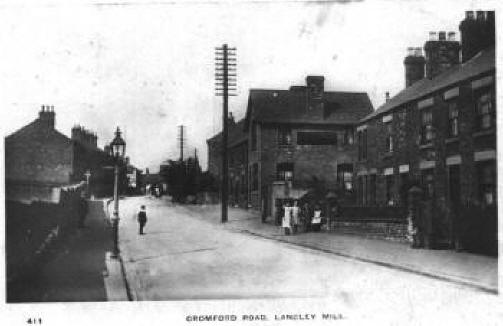
Coordinates:
Cromford, in Derbyshire, England, is a large village that is one of the significant sites in the development of the Industrial Revolution. It was here that Richard Arkwright built his cotton mill to make use of the Water Frame — a development of a spinning machine produced by Thomas Highs (1718-1803) that pre-dated, and was probably the prototype for, the spinning jenny pioneered by James Hargreaves.
The factory buildings and accommodation for workers to staff the factories form part of the Derwent Valley Mills, which is recognised as a World Heritage Site for its importance.
The Cromford Canal – built to service the mills – is now in disuse, but has been designated an SSSI. The Cromford and High Peak Railway, completed in 1831, ran from Cromford to the Peak Forest Canal at Whaley Bridge. Its track bed now forms the High Peak Trail, a walk and cycle route which is joined by the Tissington Trail at Parsley Hay.
Cromford railway station is located on the Matlock-Derby Derwent Valley Line, and can be seen on the cover of the 1995 Oasis single Some Might Say.
The Gell family, who were local Hopton landowners heavily involved in the nearby Wirksworth lead mining, had the Via Gellia built to connect Cromford and Grangemill in the 18th C.
Cromford also has a village lock-up that was used to detain drunks and suspected criminals.
In late 2006, Anand Tucker used certain parts of Cromford, including its historic bookshop, for his film "And When Did You Last See Your Father", based on the autobiographical memoir by poet Blake Morrison. Colin Firth plays the adult Blake, with Jim Broadbent cast as his dying father.


No comments:
Post a Comment